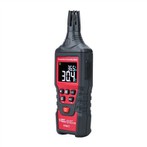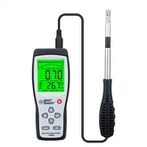Introduction to the Accuracy of Digital Multimeters
Accuracy refers to the maximum allowable error that occurs in a specific usage environment. In other words, accuracy is used to indicate the degree to which the measured value of a digital multimeter is close to the actual value of the measured signal.
For a digital multimeter, accuracy is usually expressed as a percentage of the reading. For example, a reading accuracy of 1% means that when the digital multimeter displays 100.0V, the actual voltage may be between 99.0V and 101.0V.
Specific values may be added to the basic accuracy in the detailed instruction manual. Its meaning is to change the number of words to be added to the right end of the displayed *. In the previous example, the accuracy may be marked as ± (1%+2). Therefore, if the GMM reading is 100.0V, the actual voltage will be between 98.8V and 101.2V.
The accuracy of the analog meter is calculated based on the error of the full range, rather than the displayed reading. The typical accuracy of an analog meter is ± 2% or ± 3% of the full range. The typical basic accuracy of a digital multimeter is between ± (0.7%+1) and ± (0.1%+1) of the reading, or even higher.
Precautions when using a multimeter
Precautions when using a multimeter
When measuring current and voltage, it is not allowed to change the range with electricity
When selecting a range, it is important to first select the larger one and then the smaller one, in order to make the measured value as close to the range as possible
When measuring resistance, it is not possible to measure it with electricity. Because when measuring resistance, the multimeter is powered by an internal battery. If it is charged for measurement, it is equivalent to connecting an additional power source, which may damage the meter head.
After use, the transfer switch should be placed in the maximum AC voltage position or neutral position.
Note that when changing the range of the ohmmeter, it is necessary to perform an ohmic zero adjustment without the need for mechanical zero adjustment.






